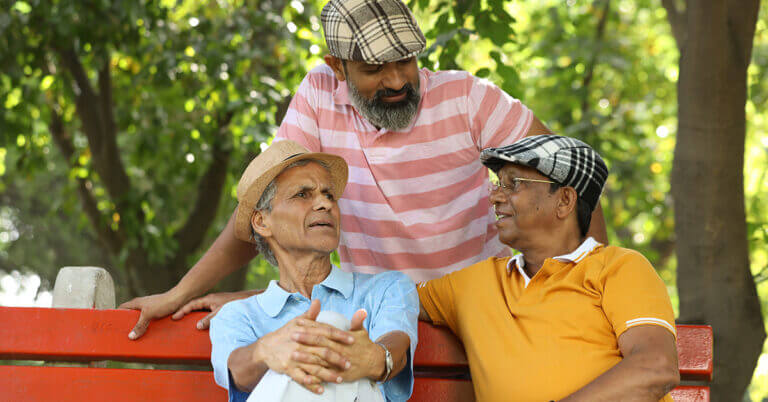January 21, 2021
Hunger, Food Insecurity, and Obesity: Finding a Common Cure
The stress of COVID-19 has exacerbated the paradox of worsening hunger and food insecurity superimposed on a pre-existing overweight and obese population. What is a cure for these intersecting maladies?
Food Insecurity and Hunger Exacerbated by COVID-19
Northwestern University estimated food insecurity more than doubled, hitting as many as 23% of all households during the pandemic. [1] Households with children had 30+% rates of food insecurity according to the same researchers. The rise in unemployment accounted for about half of the increase. School closings, initially in the spring, highlighted the awesome benefit of school lunch programs. Children in low-income families were receiving breakfast and lunch with some also getting food to take home weekday nights and over the weekend.
In 2019, even before COVID-19 became a worldwide plague, 10.5% of all U.S. households experienced food insecurity. [2] Affected people, including children, are either unable to acquire enough food to meet their needs or uncertain from where their next meal might come.
The U.S. Department of Agriculture (USDA) defines food insecurity as a lack of consistent access to enough food for an active, healthy life. [3] Hunger and food insecurity are closely related but distinct concepts. Hunger refers to a personal, physical sensation of discomfort, while food insecurity describes a lack of available financial resources for food.
Food-stressed families experience disrupted eating patterns, reduced food intake, decreased variety, and unhealthy alternatives. Food assistance programs valiantly try to fill in gaps, but success is haphazard and comes with stigmatization.
Low-income and minority people have been disproportionally impacted by the pandemic, typical of most stresses affecting the already most disadvantaged. Black families are twice as likely and Hispanic families are about 1.5 times more likely to face food insecurity than white households. Native Americans also suffer mightily.
Education matters in many ways, including with food insecurity. College grads’ insecurity rate was 5% versus those without a high school degree at 27%. Disabled adults not in the workforce suffered at double the rate of others with similar ethnicity.
An unexpected compounding injustice is that food is costlier in food deserts typically found in disadvantaged neighborhoods. Food deserts are regions where people have limited access to healthy and affordable food. [4] This lack may be due to poverty or travel impediments to find healthful food options, according to the USDA. Milk is commonly 5% less expensive in suburban markets, with cereal sometimes 25% higher in food deserts. [1] Longer distances to travel, combined with a dearth of reliable transportation, exacerbate the disparity.
Rising Overweight and Obesity
Over 73% of American adults are overweight, obese, or extremely obese according to the National Center for Health Statistics, highlighting an opposing trend to food insecurity and hunger. [5]
Body mass index (BMI), expressed as weight in kilograms divided by height in meters squared (kg/m2), is commonly used to classify overweight (BMI 25.0–29.9), obesity (BMI 30.0–39.9), and extreme obesity (BMI greater than or equal to 40.0) according to Centers for Disease Control and Prevention (CDC). [6] Among adults over age 20, about 21% are overweight, 42% obese, and 9.2% extremely obese according February 2020 CDC information.
Additionally, obesity contributes to COVID-19 morbidity and mortality. [7] The prevalence of obesity is higher in the U.S. than other member countries of the Organization for Economic Cooperation and Development and may partially account for the increase in virulence of COVID-19 in America. [8] Additional consequences of obesity for all nations are profound loss of productivity, increased incidence of disease, and worse overall well-being. Most type-2 diabetes is the result of excess weight. Obesity negatively influences many diseases, and its comorbidity rates are high, with: 41% of uterine cancer; more than 10% of gall bladder, kidney, liver, and colon cancers; and 40% of cardiovascular disease.
U.S. BMI averages started upward in the 1960s. Sadly, most efforts to stop obesity have been ineffective. In fact, obesity has become the number one underlying cause of illness in America today, surpassing tobacco toxicity.
Prevention of childhood and adolescent obesity has been successful in Blue Zones Project (BZP) communities with a recent example in Southwest Florida. Elementary students in this region added an average of 2.5 hours per week of physical activity before, during, and after school. Collier County is the only one of sixty-seven counties in Florida to see adolescent obesity rates decline in both middle and high schools.
Disproportionate Suffering

“Underserved populations are disproportionately affected by obesity, food insecurity, and catastrophic weather events in the United States, for example, and they would benefit from coordinated efforts addressing these issues,” stated a recent NEJM Perspective. [9] Racial and ethnic disparities persistently affect the most disadvantaged more severely. Of the 25 counties with the greatest food insecurity, only four—all in Kentucky—are majority white according to a recent National Geographic article addressing hunger. [10]
Poorer people also have higher levels of obesity. [11] The correlation stays true for income level and economic output per capita. A swath of states across the deep south has the highest rates of obesity and tobacco use. Obesity is also associated with unhappiness. One cannot say that happy people eat less food or unhappy people eat more, but the correlation holds true even without defined casualty.
Why Hunger and Obesity Coexist
Data from 3,139 counties showed a strong correlation among poverty, obesity, sedentariness, and diabetes. In low-income regions, people are both obese and hungry. The above-referenced Diabetes journal article doesn’t specifically break out impoverished, socioeconomically distressed counties, but food access and hunger persist in them. [12]

Hunger, food insecurity, and obesity share common root causes as well as cures. “A healthy diet, rich in fruits and vegetables and low in sugar and calorie-dense processed foods, is essential to health,” states a recent New England Journal of Medicine article addressing COVID-19 morbidity, mortality, disparities, and inequities. [8] Access to healthy affordable foods is a prerequisite to healthy eating.
One’s environment, namely the community in which one lives, is a prime determinant for healthy living. Over eons, survival resulted from finding and emulating others who were inclined to endure. Thus, healthy people feel more comfortable and tend to congregate around like-minded folks, thereby perpetuating healthy communities. Sadly, the opposite is true, with overweight people aggregating with others who continue to make bad food selections. Similarly, stressed communities struggle with self-perpetuating problems.
Two Ways to a Cure
First, make healthy food available. Many healthy foods costing less than one dollar per pound abound. [13] Fruits, vegetables, beans, eggs, rice, pasta, and yogurt are just some examples. “It costs more to eat healthy” is a common fallacy. Here, marketing matters, as do personal stories of success for individuals and entire communities. A local community food market’s owner improved both his life by losing one hundred pounds and his migrant community’s health by changing the layout and offerings in his store. [14] Communities with grocery stores featuring healthy selections nudge customers to make better choices.
A plant-slant diet is an important Blue Zone Principle. This healthy choice does not mean becoming a vegetarian but rather making vegetables the centerpiece of the plate, thus saving meat for celebratory events a few times per month. With modified diet choices, most people feel better. Positive feedback motivates continued adherence as well as inspiring family and friends to emulate success.
Second, complete streets that connect people to purveyors of healthy options improve communities. Complete streets are thoroughfares where walkers, strollers, bikers, cars, and trucks are comfortable together. These pathways deluge food deserts with healthy and supportive activities, subsequently becoming mutually supportive positive influences. Increased walkability to grocery stores and restaurants featuring nutritious choices is a healthier lifestyle win-win: providing not only improved access to better, healthy food choices but also exercise to burn calories.
Complete streets are another example of a BZP principle— moving naturally. Walking outdoors is always important and has become even more so with the threat of COVID-19 in closed spaces. Physical exercise stimulates better mental and physical health along with burning calories. As previously stated, depending on the local environment, walking to a grocery store that features healthy choices—fruits and vegetables—creates a double win.
Encouraging people to better choices by literally putting healthy food in their paths helps not only food-related stresses but also financial woes. Healthcare costs decrease as people become healthier thus creating funds for worthwhile endeavors such as education or job training.
Leadership Opportunities
An opportunity, often overlooked or ignored, is copying others’ best practices. The mistaken belief that an existing practice is optimal is typical. Confirmational bias, namely continuing the current course, is part of human nature. Change takes energy and involves risk. Effective leadership constantly scans for other’s success and then copies their best practices.
Fortunately, healthy communities, as well as motivated regions and organizations, abound. Currently, fifty-seven communities, including over 4 million people across America, are on a Blue Zones Project (BZP) journey towards better health, wellness, and happiness. Nudging people by creating an environment where the healthy choice is the easy choice has proven benefits.
Southwest Florida joined the BZP in 2015 and subsequently added 0.6 years of life expectancy to 400,000+ people across the socioeconomic spectrum. [15] Sadly, by contrast, life expectancy across America during the same time dropped, in part, due to diseases of despair—overdoses, suicides, and alcoholism.
Since 2015, cardiac mortality in Southwest Florida has dropped to the lowest in Florida with large employers experiencing lower medical costs and unchanged insurance premiums for employees. Absenteeism and worker’s compensation claims have also decreased. Metrics related to BMI, diabetes prevalence, and smoking all improved. Boston University’s analysis of Well-Being Index findings for this Metropolitan Statistical Area showed medical and productivity savings of $40,313,800.
COVID-19 has created an urgent need to change strategy, abandon ineffective policies, and embrace existing successful practices to address hunger, obesity, and other societal inequities. Leaders don’t just prepare for the future—they make it. Moments of despair hold great potential for advancement. In 1985, the scenario planner Pierre Wack wrote in Harvard Business Review, “It is precisely in these contexts—not in stable times— that the real opportunities lie to gain competitive advantage through strategy.”
Sources
- “Food Insecurity Remains Elevated Across All 50 States,” by Diane Schanzenback and Abigail Pitts, Northwestern University Institute for Policy Research, June 2020.
- “Food Insecurity in the U.S. By the Numbers,” by Christianna Silva, NPR, September 2020.
- “Definitions of Food Security,” USDA Economic Research Service, September 2020.
- “Characteristics and Influential Factors of Food Deserts,” by Paula Dutko, Michele Ver Ploeg, and Tracey Farrigan, USDA, August 2012.
- “Prevalence of Overweight, Obesity, and Extreme Obesity Among Adults Aged 20 and Over: United States, 1960–1962 Through 2013–2014,” by Cheryl D. Fryar, M.S.P.H., Margaret D. Carroll, M.S.P.H., and Cynthia L. Ogden, Ph.D., Division of Health and Nutrition Examination Surveys, 2016.
- “Defining Adult Overweight and Obesity,” by CDC, September 2020.
- “COVID-19 and Disparities in Nutrition and Obesity,” by Matthew J. Belanger, Michael A. Hill, Angeliki M. Angelidi, Maria Dalamaga, James R. Sowers, and Christos S. Mantzoros, NEJM, September 2020.
- “Health Effects of Overweight and Obesity in 195 Countries Over 25 Years,” by GBD Obesity Collaborators, NEJM, July 2017.
- “Solving Population-wide Obesity—Progress and Future Prospects, by Shiriki Kumanyika and William Dietz, NEJM, December 2020.
- “One in Six Americans Could Go Hungry in 2020 as Pandemic Persists,” by Nina Strochlic, National Geographic, November 2020.
- “The Geography of Obesity,” by Richard Florida, The Atlantic, November 2009.
- “Poverty and Obesity in the U.S.,” by James Levine, Diabetes, November 2011.
- “50 Healthy Foods That Cost Less Than $1 Per Pound,” by Jeff Yeager, AARP, April 2011.
- “After Losing 100+ Pounds, Grocery Store Owner Promotes Healthier Options,” by Lisa Monroe, Blue Zones, 2020.
- “Health Span vs. Life Span—Extending Vitality,” by Allen Weiss, Becker’s Hospital Review, March 2020.
4sight Health contributors recognize that we can’t fix the broken U.S. healthcare system without reducing the causal negative social determinants of health. Here are some 4sight Health articles with different perspectives on this issue.
- “Public Health and Healthcare in Post-COVID America: Innovative Solutions for a Healthier, More Prosperous Society” by David Johnson, Court H. Houseworth, Kyle Stern
- “America’s Frayed Safety Net Undermines Improved Primary Care” by Merrill Goozner
- “Pandemics Cubed: Social Injustice and Chronic Disease Amplify COVID-19’s Virulence” by Allen Weiss






